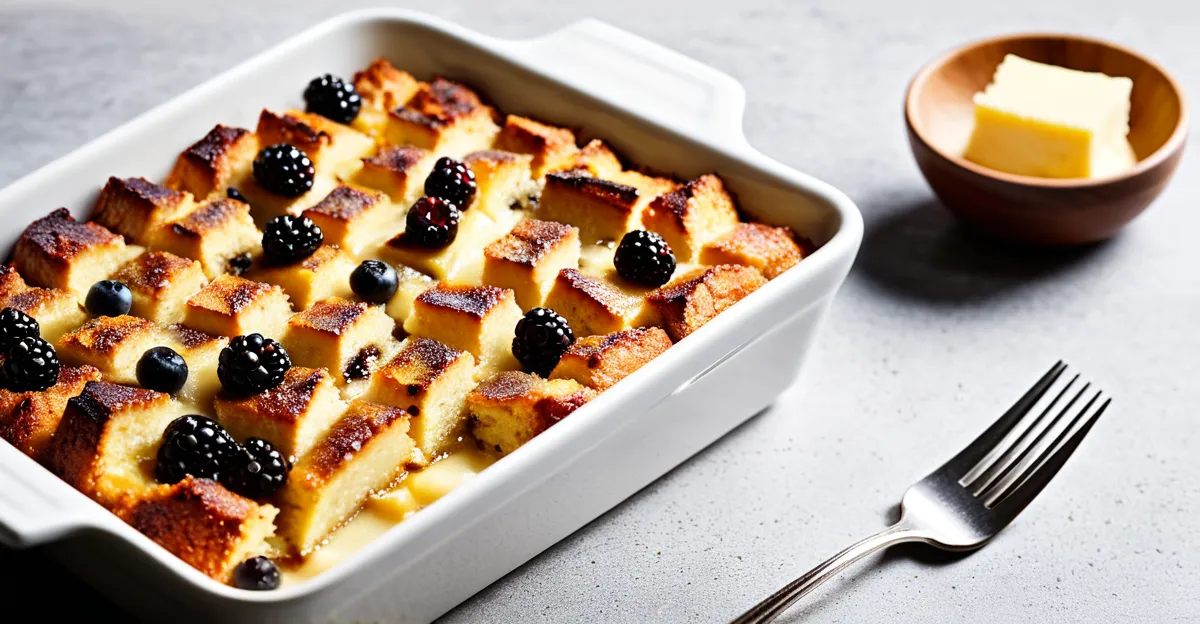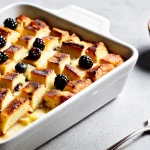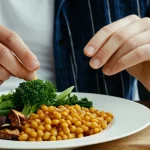Essential Ingredients for a Creamy Bread and Butter Pudding
Selecting the best bread for pudding is foundational to achieving a rich, creamy texture. Traditionally, day-old white bread or brioche works well due to their slightly dry crumb which soaks up custard effectively. Brioche offers additional richness from its butter and egg content, enhancing creaminess. Avoid overly dense or wholegrain breads unless you prefer a firmer structure, as these can resist custard absorption.
Next, the cream and egg ratios need careful balancing. The classic bread and butter pudding ingredients include whole milk, double cream, eggs, and sugar blended into the custard. The ideal ratio usually leans towards a higher proportion of cream to milk—typically, a mix of two parts cream to one part milk increases the custard’s richness and silkiness. Eggs serve as the setting agent; too many eggs can lead to a rubbery texture, whereas too few result in a runny custard. A good rule of thumb is three to four large eggs per 500ml of combined cream and milk.
Also to see : What are the secrets to perfecting a traditional Sunday roast?
Eggs not only bind but also contribute to the pudding’s luxurious mouthfeel. For added flavour, common ingredient variations include infusing the custard with vanilla pods or cinnamon sticks, folding in dried fruits like raisins or apricots between bread slices, or a splash of liqueur such as brandy for complexity. These subtle enhancements complement the base bread and butter pudding ingredients without overwhelming the creamy custard.
In sum, understanding and expertly choosing these ingredients—the right bread type, the balanced cream and egg ratios, and thoughtful flavour additions—creates the essential framework for a truly creamy and indulgent bread and butter pudding.
Also read : How can you make a vegetarian version of shepherd’s pie?
Step-by-Step Techniques for Superior Creaminess
Achieving a creamy texture in bread and butter pudding begins with the precise bread and butter pudding techniques focused on custard absorption and layering. The foundation lies in the bread soaking method—bread slices must soak thoroughly to absorb the custard evenly, ensuring a moist, luscious pudding rather than a dry or rubbery one. Ideally, bread is lightly buttered, then soaked for about 10 to 15 minutes, allowing the custard (rich in cream and eggs) to fully saturate every crumb.
When mixing ingredients, the custard must be smooth and homogenous, with eggs and cream well blended to avoid curdling during baking. Distributing the custard evenly over layered bread slices prevents dry spots and promotes a consistent texture throughout. Alternating layers of soaked bread and fruit or flavour infusions, such as vanilla or cinnamon, can deepen creaminess and add complexity.
Temperature control during baking also plays a crucial role. Baking at a moderate temperature, around 160°C (320°F), ensures the custard sets slowly, creating that signature silky mouthfeel without curdling or drying out. Using a water bath or placing a tray of water in the oven can help maintain moist heat, further protecting the pudding’s delicate custard.
In summary, mastering soaking, layering, and baking controls forms the cornerstone of pudding preparation tips that elevate the dish’s creaminess and richness.
Optimal Soaking and Baking Methods
A precise bread soaking method is fundamental for maximizing custard absorption, which directly influences the pudding’s creaminess. Soaking bread for about 10 to 15 minutes allows the custard to penetrate deeply into each slice, ensuring even moisture throughout. Too brief a soak results in dry patches, while excessive soaking can make the pudding overly soggy and collapse during baking.
Temperature control during baking is equally critical. The ideal baking temperature for pudding is around 160°C (320°F). This moderate heat lets the custard set gradually, building that signature silky texture without causing curdling. Higher temperatures risk a rubbery or cracked custard, while too low may leave the middle unset.
To avoid dry pudding, incorporate gentle heat management techniques like placing the pudding dish in a water bath or adding a tray of water inside the oven. This maintains a humid environment, preventing custard desiccation. Monitoring baking duration is also vital—baking should continue until the custard is just set but still slightly wobbly in the center, ensuring moistness upon cooling.
Mastering these soaking and baking nuances is essential for achieving a luscious, creamy pudding every time.
Expert Tips, Variations, and Common Pitfalls
Mastering bread and butter pudding tips can significantly enhance your dish’s richness and texture. One professional trick is to use a combination of different breads—mixing brioche with a lighter white bread balances buttery richness with custard absorption. Additionally, brushing bread slices with melted butter before layering encourages a golden crust while maintaining internal moisture.
Creative pudding variations introduce fresh textures and flavours without compromising creaminess. For instance, swapping traditional raisins for chopped apples or poached pears brings juiciness and subtle tartness. Incorporating nuts like toasted pecans adds crunch that contrasts the soft custard. Another option is adding a zest of citrus or a splash of orange liqueur to brighten the custard’s depth.
Some common mistakes can sabotage pudding creaminess. Overbaking is frequent; it causes the custard to dry out or curdle, leading to a rubbery texture. To avoid this, monitor baking time closely and remove the pudding when the custard still jiggles slightly. Another error is scant soaking; ensuring the bread is fully saturated with custard is essential to prevent dryness. Lastly, insufficient seasoning or lack of flavour layering can result in a bland pudding—infuse custard with spices like cinnamon or vanilla for complexity.
By applying these expert bread and butter pudding tips, experimenting with ingredient swaps, and sidestepping typical errors, you’ll consistently achieve a rich, smooth pudding with appealing textures and flavours.







